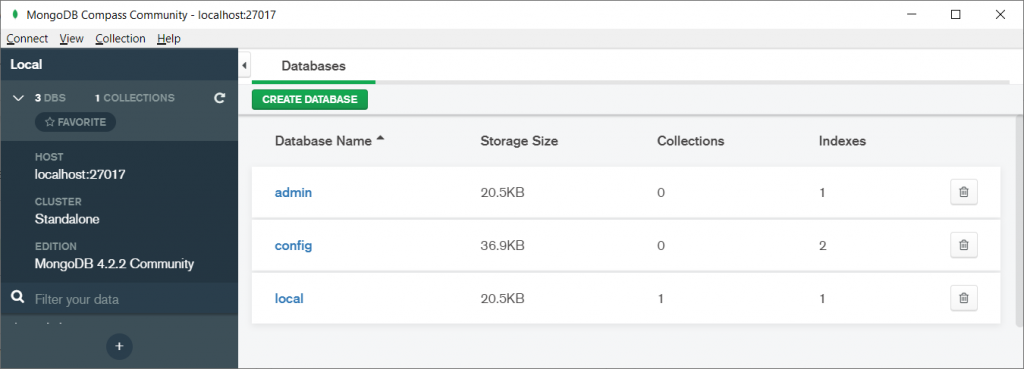

- #Interface mongodb compass on gcp instance how to#
- #Interface mongodb compass on gcp instance install#
- #Interface mongodb compass on gcp instance update#
Next we need to update our index.js file in the src directory:Ĭonst swagger = require('./config/swagger')įastify.register(require('fastify-swagger'), swagger.options)į(`server listening on $) We have now extracted the logic that starts the server to the server.js file, allowing us to reuse this code throughout the project. then(() => console.log('MongoDB connected.')) connect('mongodb://localhost/mycargarage') In the src directory we will create a new file called server.js: cd srcĪdd the following code code to the server.js file: // Require the fastify framework and instantiate it Refactor our server and start the app!Īs with all software solutions, as the solution grows, developers often need to revisit and refactor the code. This is done to ensure that everyone completing the tutorial is working with the same package versions.
#Interface mongodb compass on gcp instance install#
So now that we have a copy of the codebase we will update our packages and package.json file by running the following code: sudo npm i -g npm-check-updatesįirst we globally install the npm package “ npm-check-updates” and then we use this package to automatically update our package.json file with the latest package versions and then we install/update all our npm modules by running npm install.

Let’s get started!Ĭlone the repo for part one (skip this step if you followed part one and you are continuing with your own code) by opening your terminal, navigating to your project directory and executing each of the following lines of code: git clone To follow along, you will need to complete part one of this series or grab the code from Git, although I would highly recommend at least skimming through part one. If you have completed the first part of this series, you should be up to speed with beginner/intermediate JavaScript knowledge, Node.js, Fastify.JS and MongoDB (Mongoose). GraphQL provides a complete and understandable description of the data in your API, gives clients the power to ask for exactly what they need, makes it easier to evolve APIs over time, and enables powerful developer tools.

GraphQL is a query language for APIs and a runtime for fulfilling those queries with your existing data.Įvery GraphQL query goes through three phases: the queries are parsed, validated and executed. As a bonus we will also use Faker.js to create some fake data and seed the database. In this part we will revisit the models, controllers and routes from part one and then integrate GraphQL into the application. The first part of the series is available here and the source code for the application can be found here.
#Interface mongodb compass on gcp instance how to#
Part 2: How to build a blazing fast GraphQL API with Node.js, MongoDB, Fastify and GraphQL! (You are here.).Part 1: How to build blazing fast REST APIs with Node.js, MongoDB, Fastify and Swagger.This tutorial is part two of a four part series, which aims to take you from scratch to deploying a fully functional full stack application.


 0 kommentar(er)
0 kommentar(er)
